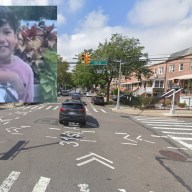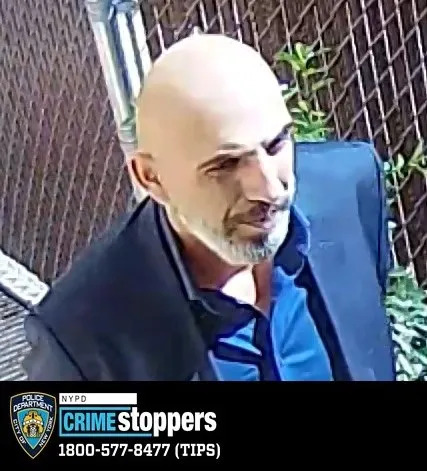By Daniel Arimborgo
New York's long history as a hub of immigration is the subject of a Queens College mural, created by art education students.
College officials, the muralists and their families were present for a ribbon-cutting and commemoration of the mural in the Rosenthal Library Reading Room.
Eleven graduate students, under the supervision of Dr. Rikki Asher, director of the college's Art Education Department, worked on the mural, titled “Procession.”
Started this February through funding from the President's Innovative Teaching Grant, the graduate students, who are working toward teaching degrees in art, created the mural to reflect tolerance of cultural difference through awareness of local history and heritage.
In the 16-foot mural, which is immediately visible upon entering the reading room, the No. 7 train is one of the most noticeable elements, placed prominently in the foreground.
The Triborough Bridge spans a good portion of the background. The Statue of Liberty, also in the background, is haloed by the sun. To her right is a silhouette of the Unisphere.
In the upper left corner, bocci players toss the clay balls. Below, an Asian grandmother dotes on her grandson.
Outgoing Queens College President Allen Lee Sessoms, who was scheduled to give the welcoming remarks for the ceremony, was a no-show; officials said he was at school dedication with new Schools Chancellor Harold Levy.
Following an introduction by Chief Librarian Sharon Bonk, guest speaker Andrew Jackson, director of the Langston Hughes Library and Cultural Center in Corona, read one of a Hughes' poems called “I Dream a World,” about ethnic harmony.
Next, John Driscoll, president of the Queens Historical Society, spoke of a recent neighborhood tour of churches he took, which revealed the diversity of the congregations. He recounted how one congregation was made up almost entirely of ethnic Indians.
Asher, a muralist, said she conceived the concept for “Procession” after working on a mural at SUNY New Paltz focusing on Sojourner Truth, the freed slave turned abolitionist. She said that learning about Truth's struggles made her think about her own family's.
Both of Asher's grandmothers fled Russia during the Jewish pogroms there, emigrating to America. Her mother-in-law grew up in Freiburg, Germany, where at age 13, she witnessed the Kristallnacht riots and saw her synagogue burned down. She was sent to Switzerland on a children's transport, and seven years later emigrated to America from France.
Planning for the mural was in three stages: Information gathering through personal interviews, historical research, and layout design planning.
Asher says she hopes the mural will prompt further discussion and understanding about the relationship between history and art.
She said the Historical Society was an invaluable help to some of the students, and that she thought of New York like a patchwork quilt.
“The stories were right in front of us, we just had to put them together,” she said.

































